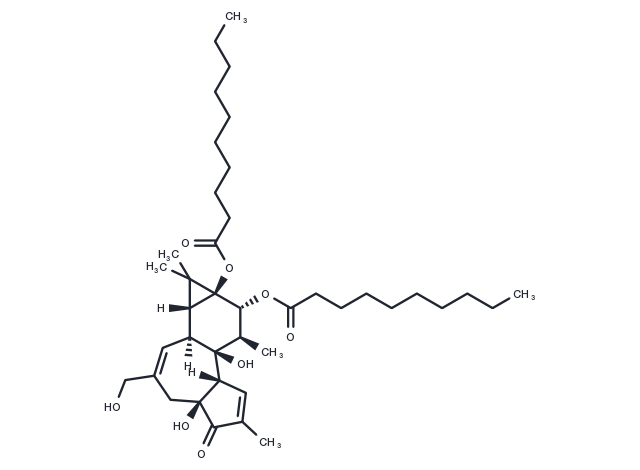Powder: -20°C for 3 years | In solvent: -80°C for 1 year


4alpha-PDD activates transient receptor potential vanilloid 4 (TRPV4) channels and is inactive for signaling through PKC.

| Pack Size | Availability | Price/USD | Quantity |
|---|---|---|---|
| 1 mg | 35 days | $ 250.00 | |
| 5 mg | 35 days | $ 1,060.00 |
| Description | 4alpha-PDD activates transient receptor potential vanilloid 4 (TRPV4) channels and is inactive for signaling through PKC. |
| Synonyms | 4α-Phorbol 12,13-didecanoate |
| Molecular Weight | 672.93 |
| Formula | C40H64O8 |
| CAS No. | 27536-56-7 |
Powder: -20°C for 3 years | In solvent: -80°C for 1 year
You can also refer to dose conversion for different animals. More
bottom
Please see Inhibitor Handling Instructions for more frequently ask questions. Topics include: how to prepare stock solutions, how to store products, and cautions on cell-based assays & animal experiments, etc.
4alpha-PDD 27536-56-7 4alphaPDD 4alpha PDD 4alpha-Phorbol 12,13-didecanoate 4α-Phorbol 12,13-didecanoate 4a-PDD 4α-PDD 4a-Phorbol 12,13-didecanoate inhibitor inhibit
